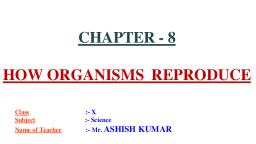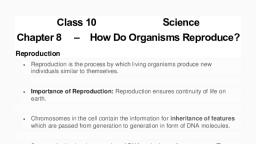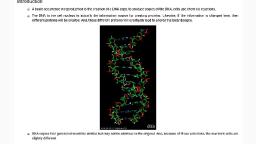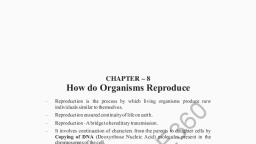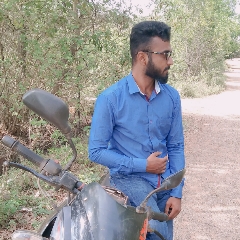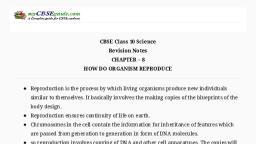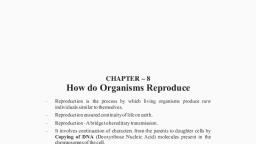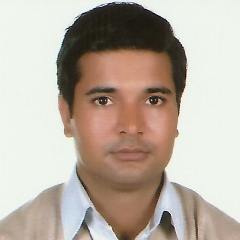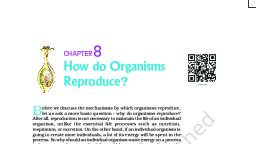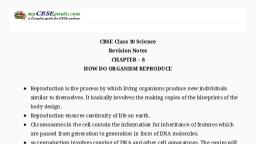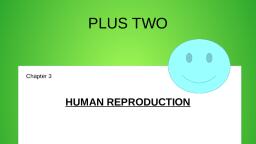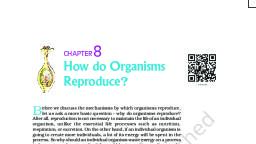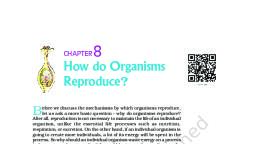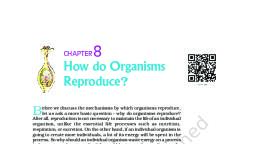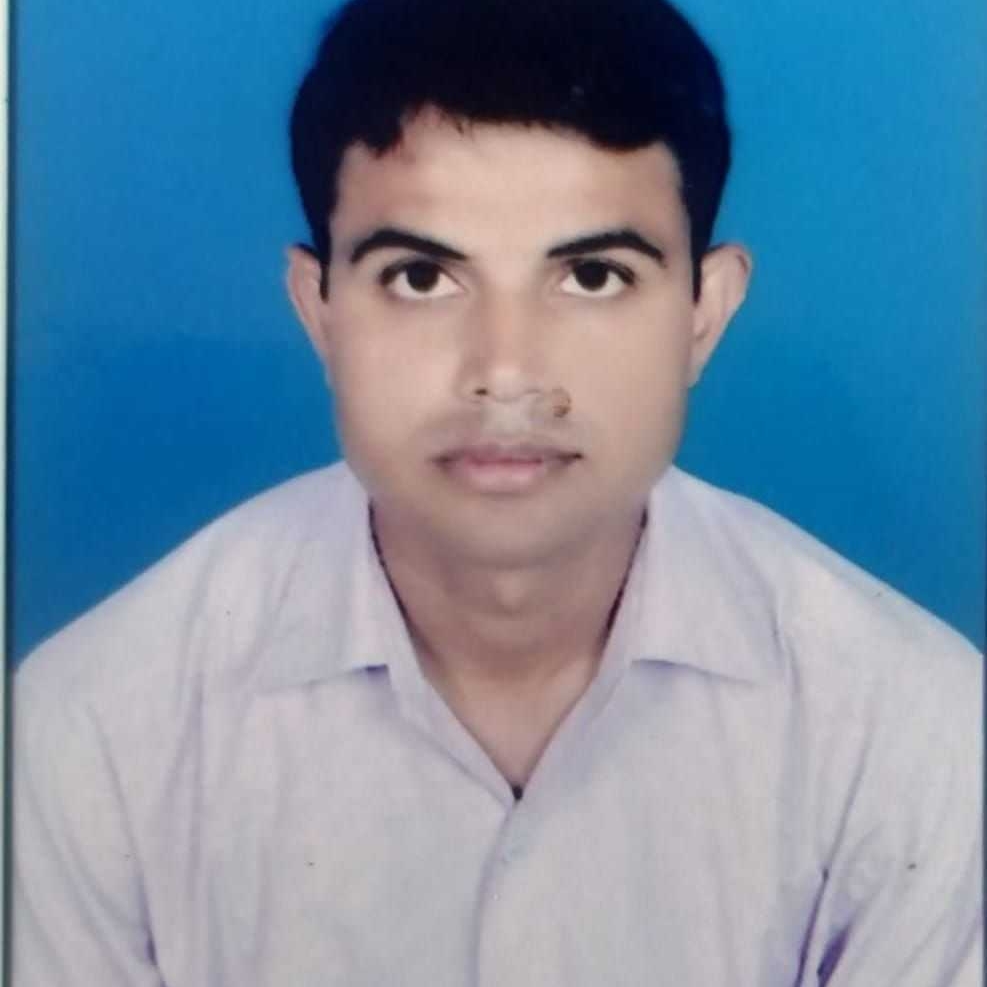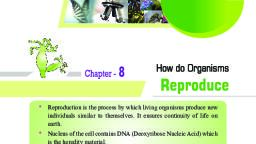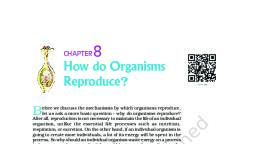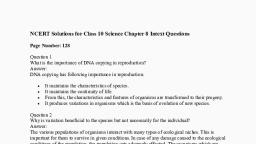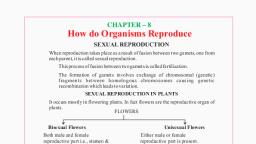Page 1 :
Study Materials, • JEE Main & Advanced – Free Study Material, • NEET UG – Free Study Material, • NCERT Solutions for Class 1 to 12, • NCERT Books PDF for Class 1 to 12, • ICSE & ISC Free Study Material, • Free Study Material for Kids Learning (Grade 1 to 5), • Olympiad Free Study Material, • Reference Books (RS Aggarwal, RD Sharma, HC Verma, Lakhmir, Singh, Exemplar and More), • Previous Year Question Paper CBSE & State Boards, • Sample Papers, • Access All Free Study Material Here, , Vedantu Innovations Pvt. Ltd., Score high with a personal teacher, Learn LIVE Online!, www.vedantu.com
Page 2 :
Chapter 8 - How do Organisms Reproduce?, 1. Do organisms create exact copies of themselves?, Chromosomes in the nucleus of a cell contain information for inheritance of features from, parents to next generation in the form of DNA molecules. The DNA in the cell nucleus is the, information source for making proteins. If the information is changes, different proteins will, be made. Different proteins will eventually lead to altered body designs. Therefore, a basic, event in reproduction is the creation of a DNA copy., DNA copying is accompanied by the creation of an additional cellular apparatus and then the, DNA copies separate each with its own cellular apparatus. Effectively a cell divides to give, rise to two cells., The process of copying the DNA will have some variations each time. As a result the DNA, copies generated will be similar but may not be identical to the original., 1.1 The importance of variation, The consistency of DNA copying during reproduction is important for the maintenance of, body design features that allow the organism to use that particular niche. Reproduction is, therefore linked to the stability of populations of species., Variations are beneficial to the species than individual because sometime for a species, the, environmental conditions change so drastically that their survival becomes difficult. For, example, if the temperature of water increases suddenly then most of the bacteria living in, that water would die. Only few variants resistant to heat would survive and grow further., However, if these variants were not there then the entire species of bacteria would have been, destroyed. Variation is ths useful for the survival of species over time., 2. Modes of reproduction used by single organisms, Reproduction is the phenomenon which involves the production of an offspring by particular, individual or individuals to propagate their species. Reproduction is done during reproductive, phase., Types of reproduction, Reproduction can be of two different types, namely, asexual reproduction and sexual, reproduction., •, •, , Asexual mode of reproduction: It is a mode of reproduction in which a single, individual is responsible for creating a new generation of species., Sexual mode of reproduction: It is a mode of reproduction in which two individuals, are responsible for creating a new generation of species., Reproduction in unicellular organisms is different from that of the reproduction in, multicellular organisms. Most often unicellular organisms reproduce asexually. Some of, them can also exhibit sexual mode of reproduction. Unicellular organisms reproduce, asexually through fission, fragmentation, regeneration, budding, vegetative propagation, and spore formation., , CLASS - X, , SCIENCE, , www.vedantu.com
Page 3 :
2.1 Fission:, For unicellular organisms, cell division, or fission leads to the creation of new individuals., Fission can be transverse binary fission or longitudinal binary fission or multiple fission., •, •, •, , Transverse binary fission is the splitting of the cells along any plane during division. e.g., amoeba, Longitudinal binary fission is the division occurring in a definite orientation in relation to, the whip-like structures located at one end of the cell. e.g. Leishmania., Multiple fission is the division of mother cell into many daughter cells simultaneously., e.g. Plasmodium., , 2.2 Fragmentation:, This is the process in which the organism breaks up into smaller pieces on maturation. Each, fragment grows into a new individual. e.g. Spirogyra., 2.3 Regeneration:, Many fully differentiated organisms have the ability to give rise to new individual organism, from their body parts. That is if the individual is somehow cut or broken up into many pieces,, many of these pieces grow into separate individuals. This is known as regeneration. Eg:, Planaria, Hydra, 2.4 Budding:, A protuberance like outgrowth called as bud grows and detaches from the parent to develop, into a separate organism. Each bud develops into a tiny individual. e.g. Hydra., 2.5 Vegetative propagation, This is the mode by which plants reproduce asexually. It involves the production of new, plants from the vegetative parts of an existing plant. Different methods of vegetative, propagation in plants include stem cutting, layering and grafting., •, Grafting involves fusion of tissues of one plant with those of another plant. Grafting is a, vegetative method of propagation for apples and roses., •, Leaf buds can grow as young plants in Bryophyllum. When the leaf touches moist soil,, each bud grows into a new plantlet., •, Rhizomes are horizontal, underground plant stems with shoots and roots serving as, reproductive structures., Advantages:, Plants raised by vegetative propagation can bear flowers and fruits earlier than those, produced from seeds., All plants produced are genetically similar enough to the parent plant to have all its, characteristics., , CLASS - X, , SCIENCE, , www.vedantu.com
Page 4 :
2.6 Spore formation:, Sporangia which contain cells or spores that eventually develops into new individuals. Spores, are very light and are covered by thick walls that protect them. Spores germinate into new, individuals on moist surfaces. e.g. Rhizopus., 3. Sexual Reproduction:, 3.1 Why the sexual mode of Reproduction?, Sexual reproduction involves two organisms, the male and the female in the process of, producing the offspring. Sexual reproduction provides greater variations in the DNA thereby, making the offspring adapted for better survival. Sexual reproduction ensures a mixing of the, gene pool of the species. Due to genetic recombination, variations occur in the process of, sexual reproduction., During Sexual reproduction the combination of DNA from two parents would result in the, offspring having twice the amount of DNA. To solve this problem, sexually reproducing, individuals have special germ cells (gametes) with only half the normal number of, chromosomes and, therefore half the amount of DNA compared to the other cells of the body., When such germ cells from two individuals untie during sexual reproduction the normal, chromosome number and DNA content are restored., In multicellular organisms body designs become more complex, the germ cells also, specialize. One germ cell is large and contains the food stores while the other is smaller and, likely to be motile. The motile germ cell is called the male gamete and germ cell containing, the stored food is called the female gamete., 3.2. Sexual Reproduction in flowering plants, Plants reproduce sexually by producing male gametes in the form of pollen and the female, gametes in the form of eggs. The reproductive parts of angiosperms are located in the flower., A flower comprises sepals, petals, stamens and carpels. Stamen and carples are the, reproductive parts of a flower which contain germ cells., •, , •, , A unisexual flower contains either stamens or carpels. For example, papaya and, watermelon are unisexual flowers, A bisexual flower contains stamens as well as carpels. For example, hibiscus and, mustard flowers are bisexual., , Stamen is the male reproductive part and it produces pollen grains. Carpel is present in the, centre of a flower and is the female reproductive part. It consists of the ovary, style and, stigma. The ovary is the swollen part at the bottom of the carpel. Ovary contains the female, gametes in the form of eggs or ovules. The male germ cell produced by pollen grain fuses, with the female gamete present in the ovule. This fusion of the germ cells or fertilization, forms the zygote which is capable of growing into a new plant., The transfer of pollen grains from the anther to the stigma of the carpel is known as, pollination. Two types of pollination are self-pollination and cross-pollination. Selfpollination involves the transfer of pollen grains from anther to the stigma of the same flower., Cross-pollination involves the transfer of pollen grains from anther of one flower to the, CLASS - X, , SCIENCE, , www.vedantu.com
Page 5 :
stigma of another flower. This transfer of pollen from one flower to another is achieved by, agents like wind, water or animals., After the pollen lands on a suitable stigma it has to reach the female germ cells which are in, the ovary. For this a tube grows out of the pollen grain and travels through the style to reach, the ovule. Inside the ovule a male germ cell fuses with a female germ cell and forms a zygote., This is known as fertilization., After fertilization, the zygote divides repeatedly to form an embryo which resides inside the, seed. The ovule develops into a seed. The ovary ripens to form a fruit. Meanwhile the petals,, sepals, stamens, style and stigma may fall off. Seed inside the fruit encloses the embryo, the, future plant. The seed contain the future plant or embryo which develops into a seedling, under appropriate condition. This process is known as germination. The factors essential for, germination are nutrients, water and proper temperature. Seed has an embryo protected by, reserved food materials in the form of cotyledons and also an outer covering called as seed, coat., 3.3 Reproduction in Human Beings., Humans use a sexual mode of reproduction. Reproductive phase is the phase in the life of, every individual which makes the individual capable of reproducing the offspring. In the, early reproductive phase, individuals acquire changes in the body which result in the, formation of germ cells. Sperms are male germ cells and eggs are female germ cells., Reproductive phase involves the changes in appearance and size of the bodily organs., Adolescence is the period of life that leads to sexual maturity. During this period of life, one, can observe many changes in the body. Puberty is the period at the beginning of adolescence, when the sex glands in a boy and a girl are capable of reproduction. Different changes in boys, include change in the voice, active functioning of sweat and sebaceous glands, growth of, facial and body hair, enlargement of penis etc. Different changes in girls include growth of, pubic hair, active functioning of sweat and sebaceous glands, menstrual cycle, enlargement of, breasts., 3.3 (a) Male reproductive system, This system includes a pair of testis, vas deferens and a muscular organ, the penis. Testes are, placed in a structure called as scrotum which is located outside the abdominal cavity because, sperm formation requires a lower temperature than the normal body temperature. Testes, produce the male gametes known as sperms. Testosterone is the male sex hormone secreted, by the testes. It regulates the development of sperms and the secondary sexual characteristics, leading to puberty. The vas deferens is a tube that carries sperm from the testes. The urethra, forms a common passage for both the sperm and urine as it is just one tube that connects both, the glands – urinary bladder and vas deferens. Prostate gland and seminal vesicles secrete, semen to make the movement of sperms easier and also provides nutrition. The sperms are, tiny bodies that consist of mainly genetic material and along tail that helps them to move, towards the female germ cell., , CLASS - X, , SCIENCE, , www.vedantu.com
Page 6 :
3.3 (b) Female Reproductive System., This system includes a pair of ovaries, a pair of oviducts, uterus and vagina opening out, through urethra. Eggs, the female gametes develop inside the ovaries. One mature egg is, released by either of the ovaries per month. Ovaries secrete two hormones namely estrogen, and progesterone which bring about secondary sexual characters in females. The egg is, carried from the ovary to the uterus through a thin oviduct or fallopian tube. The two oviducts, combine and open into an elastic bag-like structure known as the uterus. The uterus opens, into vagina through cervix. The uterus helps in the development of the foetus. The sperm, enter through the vaginal passage during sexual intercourse. The sperms begin moving up the, vagina and uterus, finally reaching the fallopian tubes. The fertilized egg, the zygote gets, implanted in the lining of the uterus and starts dividing. It divides repeatedly to form an, embryo. Embryo gets implanted in the lining of the uterus for further development., The placenta is a connective tissue established between foetus and the mother. It contains, villi on the embryo’s side of the tissue. It provides a large surface area for the nutrients and, oxygen to pass from mother to the embryo. It also helps in transporting excretory wastes from, embryo to mother. The development of the child inside the mother’s body takes, approximately nine months. The child is born as a results of rhythmic contractions of the, muscles in the uterus., 3.3 (c) what happens when the egg is not fertilized?, If the egg is not fertilized it lives for about one day. Since the ovary releases one egg every, month the uterus also prepares itself every month to receive a fertilized egg. Thus its lining, becomes thick and spongy. This would be required for nourishing the embryo if fertilization, has taken place. Now, however the lining is not needed any longer. So the lining slowly, breaks ans comes out through the vagina as blood and mucous. This cycle take place roughly, every month and is known as menstruation. It usually lasts for about 2-8 days., 3.3 (d) Reproductive Health., Reproductive health is concerned with healthy and safe sexual practices. Unhealthy practices, can lead to the transmission of disease from one partner to another and even to the offspring., Reproductive health also depends on healthy behavior and outlook towards sex life. Sexual, maturation and body growth are gradual processes. Even with some degree of sexual, maturation the body and mind are not mature enough for a sexual act, childbearing and, bringing up children., As, sexual intercourse involves intimate physical contact between the male and female sex, organs, it may transmit certain disease from one partner to another. Such diseases are called, sexually transmitted disease (STDs). e.g. Bacterial infections such as gonorrhoea and, syphilis, viral infections such as warts and HIV., Contraceptive devices are the devices which block the entry of sperm into oviducts thereby, preventing the egg from being fertilized. These devices help to prevent transmission of many, infections to some extent. e.g. Copper-T or intra uterine contraceptive device (IUCD) placed, in the uterus blocks the passage of sperm. Contraceptive drugs can also be taken orally as, CLASS - X, , SCIENCE, , www.vedantu.com
Page 7 :
pills to avoid pregnancy. Condoms on the penis or similar coverings worn in the vagina can, also be used. Surgical methods like vasectomy in males to block the vas deference so that, sperm transfer will be prevented and tubectomy in females to block the fallopian tube which, makes the egg unreachable to uterus are proven to be contraceptive methods. Surgical, methods are safe in the long run., Surgery can also be used for aborting unwanted pregnancies. However, this is often misused, for illegally aborting female fetuses. To prevent female foeticide (killing of a foetus), prenatal, sex determination has been prohibited by law., , CLASS - X, , SCIENCE, , www.vedantu.com
Page 8 :
, , Thank You, for downloading the PDF, , FREE LIVE ONLINE, , MASTER CLASSES, FREE Webinars by Expert Teachers, , FREE MASTER CLASS SERIES, , , For Grades 6-12th targeting JEE, CBSE, ICSE & much more, , , , Free 60 Minutes Live Interactive classes everyday, , , , Learn from the Master Teachers - India’s best, , Register for FREE, Limited Seats!
